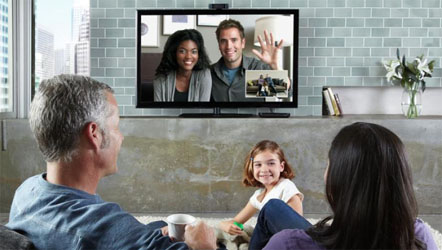Why Marketers are Chasing the Mobile Mirage
By Rakesh Raman
Can a mobile device double as phone and TV? Yes, if you do something about its screen size, something about its battery life, something about the shaky networks, something to keep service prices in control, and everything to improve the content quality.
Is that all? No, wait a sec!
Before I forget, you need to increase the number of hours in a day from the present 24 to give sufficient opportunity to consumers to spare time from their routine local train travels, newspaper readings, office rigmaroles, seaside hangouts, living-room TV viewing, and, of course, from online social networks.
Then why not? Mobile can certainly act as a TV or any other gadget that you want it to become.
Believe me; I’m not against the aspirations of those business honchos who’re hell-bent on converting the poor little mobile phone to a TV, a camera, a gaming device, or sometimes a music player.
In this entire mad scramble to overload the device with all types of extracurricular responsibilities, they’ve virtually forgotten that traditionally the device was designed for voice calls. That’s why this is called a “phone.” Some mobile makers have even tried to strip the computer of its functions and have been calling their phones as multimedia computers.
As mobile companies want to live in fool’s paradise, they don’t even hesitate to fool themselves with that unrealistic market research data (I don’t want to repeat the same data here, as it conceals more than what it reveals) that tells them the market will be huge after some decades or so.
With the same numbers, they are trying to hoodwink the consumers. But somewhere inside they know it’s not going to be a walk in the park – almost impossible unless they successfully address all those issues – from screen size to consumer behavior.
Mobile players’ frustration, however, is justified. Voice-only mobile markets have virtually dried up. Now, they want to use the only weapon they possess – the mobile device – to infiltrate consumers’ hearts and pockets by offering these content or data services to see high ARPU (average revenue per user) levels.
But they have been too careless about technology that has been moving at snail’s pace in the mobile’s case because of small form factor, tired batteries, lack of suitable applications, and so on. Plus, they’ve virtually closed their eyes to really understand consumers’ tastes.
Why multimedia-on-mobile or web-on-mobile demand is not taking off?
Let’s take the case of a typical young consumer on whom most mobile vendors are basically pinning their hopes. Now majority of these consumers live with those poor man’s mobiles or feature phones, which are not capable enough to handle the swanky multimedia content including movie clips, games, or even e-mails.
Worldwide, there are an estimated 4 billion mobiles in use but not more than one-tenth of them are capable enough to accept modern data services.
But for discussion purposes, let’s assume that most consumers own such a smartphone. Will they use it? When they’re at home, say, they’ll watch a TV, read a newspaper or a book, and use their music systems for all their infotainment needs. If there’s more time with them, they’ll check their mails on a computer or flirt with friends on social networks.
An average user won’t have more than 60 minutes a day to do all this after their hectic office work, daily commuting, social chores, family meetings, and so on. So, when will they have time to switch on the mobile and watch a movie trailer or play a mobile game?
Plus, continuous mobile use for content watching causes headache and irritation because you have to glue your eyes to its tiny screen, which is too stressful.
You can’t have fun under such a stress. Who’d need that kind of mobile entertainment? A mobile phone can certainly be a need for a consumer but movies on mobile can’t be a need.
Now, which mobile company has the courage to position multimedia content on mobile as a need? It can’t be. And no consumer is in such a tearing hurry to stop on the road to watch a cricket or a football match on mobile.
By nature, everyone wants to enjoy entertainment content from a distance like on a TV when they’re looking toward the ceiling fan or simultaneously reading a novel or their son’s report card along with leisurely watching a TV movie.
Mobile device is not fit for that. And the moment you try to increase its screen size, the entire device will be bigger. Then it’s not a portable mobile device. Then it’s perhaps a mini TV or something. You need to carry a bag to carry it along.
It’ll be good for mobile companies to consider all these aspects before taking a plunge in the Mobile 2.0 era characterized by multimedia content. Alternatively, they’re free to chase the mobile mirage, as they’ve been doing for years.
By Rakesh Raman, the managing editor of Raman Media Network.





